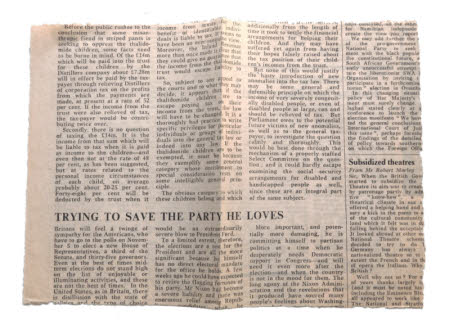Newspaper cutting
Category
Ephemera
Date
Unknown
Materials
Newspaper
Order this imageCollection
Mr Straw's House, Nottinghamshire
NT 3151590.2
Summary
Newspaper cutting taken from 'TIMES 22 OCT 1974', handwritten by William Jnr.; 'Archaeology report Roman fort discovered A large and hitherto unknown Roman Fort has been discovered near Hadrian's Wall in Northum- bria. It covers an area of at least seven acres and was built of turf and timber during the northern campaign of Agricola in about AD 78....'. The cutting is kept in the book 'The hand-book to the Roman wall:. a guide to tourists traversing the barrier of the lower isthmus.' by John Collingwood Bruce (1805-1892) (record 3151590). The Reverend John Collingwood Bruce, FSA (1805–1892) was an English nonconformist minister and schoolmaster, known as a historian of Tyneside and author. He co-operated with John Stokoe in compiling the major song collection Northumbrian Minstrelsy published in 1882. The eldest son of John Bruce of Newcastle, he was educated at the Percy Street Academy, a well-known school in Newcastle kept by his father, and afterwards at Mill Hill School, Middlesex. He entered Glasgow University in 1821, graduated M.A. in 1826, and became hon. LL.D. in 1853. In early life, Bruce studied for the Presbyterian ministry, but never sought a call from any congregation. In 1831, he began to assist in the management of his father's school, of which he became sole proprietor in 1834, when his father died. He retired from the school, after a successful career, in 1863. Bruce's main interest was in the history of Britain, in particular North East England and more specifically Roman Britain and Hadrian's Wall. His books used a numbering system for the structures of the Wall, and by about 1930 it had become standard, using the milecastle located to the east

